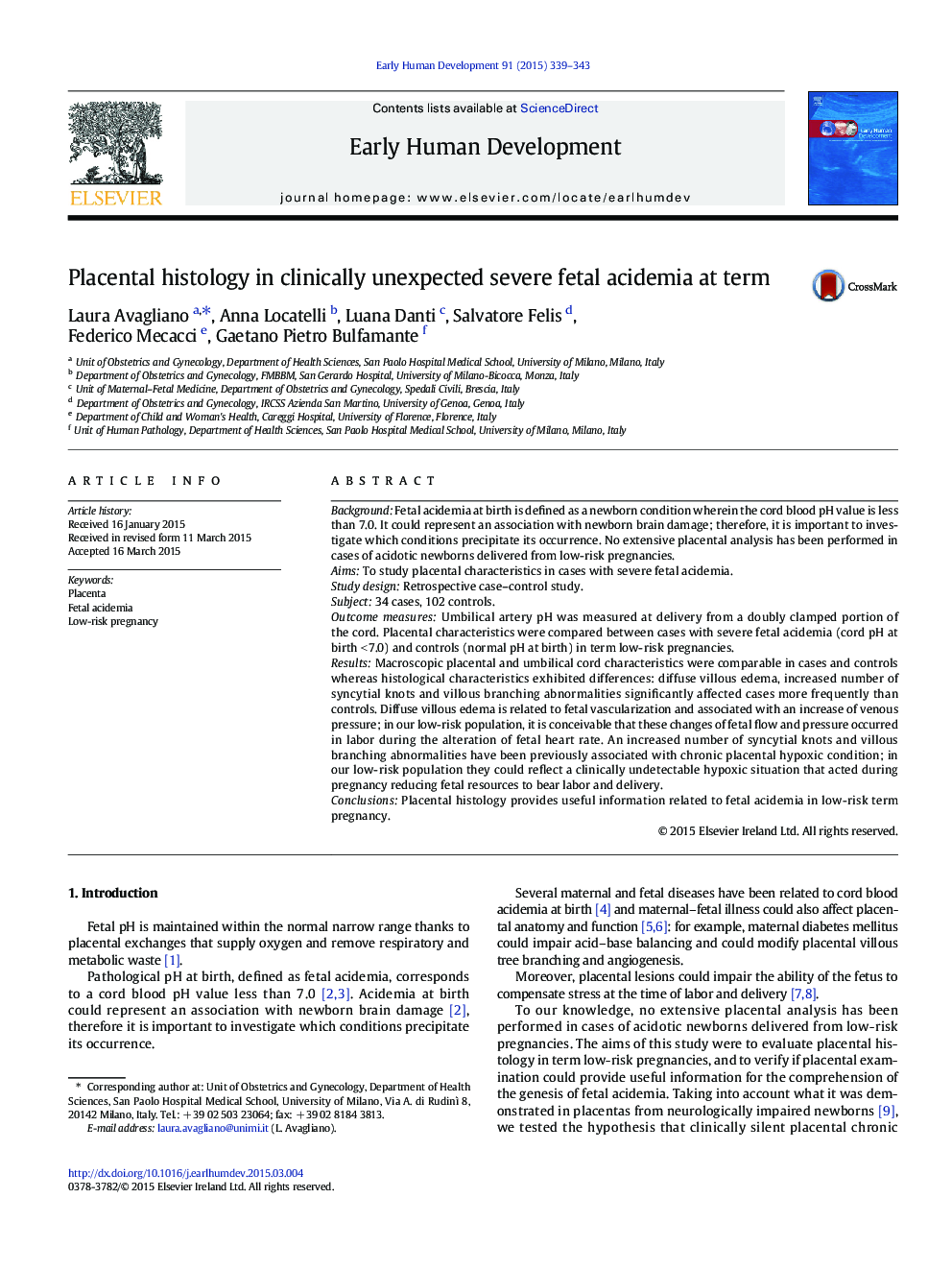| Article ID | Journal | Published Year | Pages | File Type |
|---|---|---|---|---|
| 3917887 | Early Human Development | 2015 | 5 Pages |
•We examined placental histology in low-risk term pregnancies.•Cases with severe fetal acidemia at birth were compared to controls.•Placental lesions affected cases more frequently than controls.•Placental histology provides useful information related to fetal acidemia.
BackgroundFetal acidemia at birth is defined as a newborn condition wherein the cord blood pH value is less than 7.0. It could represent an association with newborn brain damage; therefore, it is important to investigate which conditions precipitate its occurrence. No extensive placental analysis has been performed in cases of acidotic newborns delivered from low-risk pregnancies.AimsTo study placental characteristics in cases with severe fetal acidemia.Study designRetrospective case–control study.Subject34 cases, 102 controls.Outcome measuresUmbilical artery pH was measured at delivery from a doubly clamped portion of the cord. Placental characteristics were compared between cases with severe fetal acidemia (cord pH at birth < 7.0) and controls (normal pH at birth) in term low-risk pregnancies.ResultsMacroscopic placental and umbilical cord characteristics were comparable in cases and controls whereas histological characteristics exhibited differences: diffuse villous edema, increased number of syncytial knots and villous branching abnormalities significantly affected cases more frequently than controls. Diffuse villous edema is related to fetal vascularization and associated with an increase of venous pressure; in our low-risk population, it is conceivable that these changes of fetal flow and pressure occurred in labor during the alteration of fetal heart rate. An increased number of syncytial knots and villous branching abnormalities have been previously associated with chronic placental hypoxic condition; in our low-risk population they could reflect a clinically undetectable hypoxic situation that acted during pregnancy reducing fetal resources to bear labor and delivery.ConclusionsPlacental histology provides useful information related to fetal acidemia in low-risk term pregnancy.
